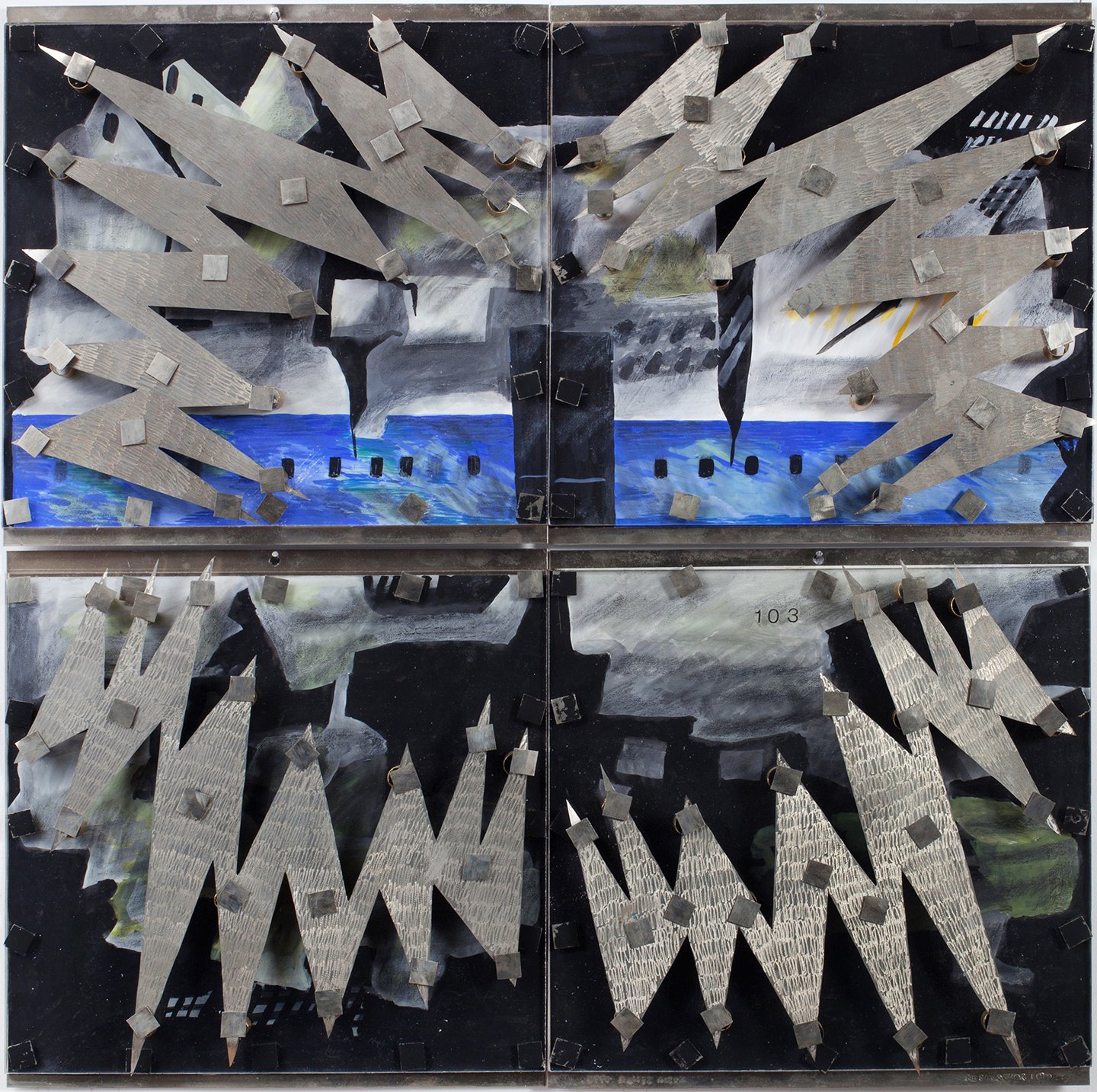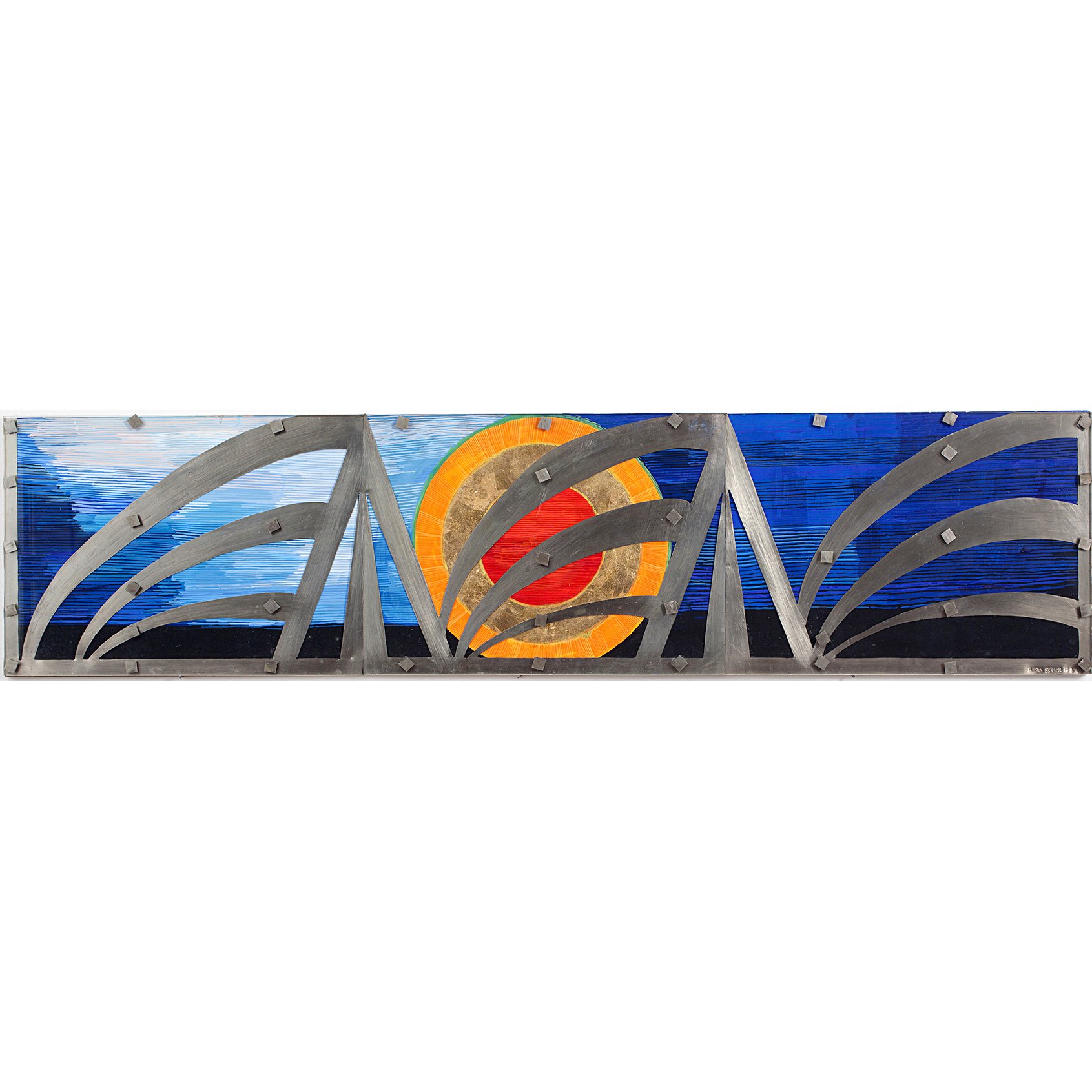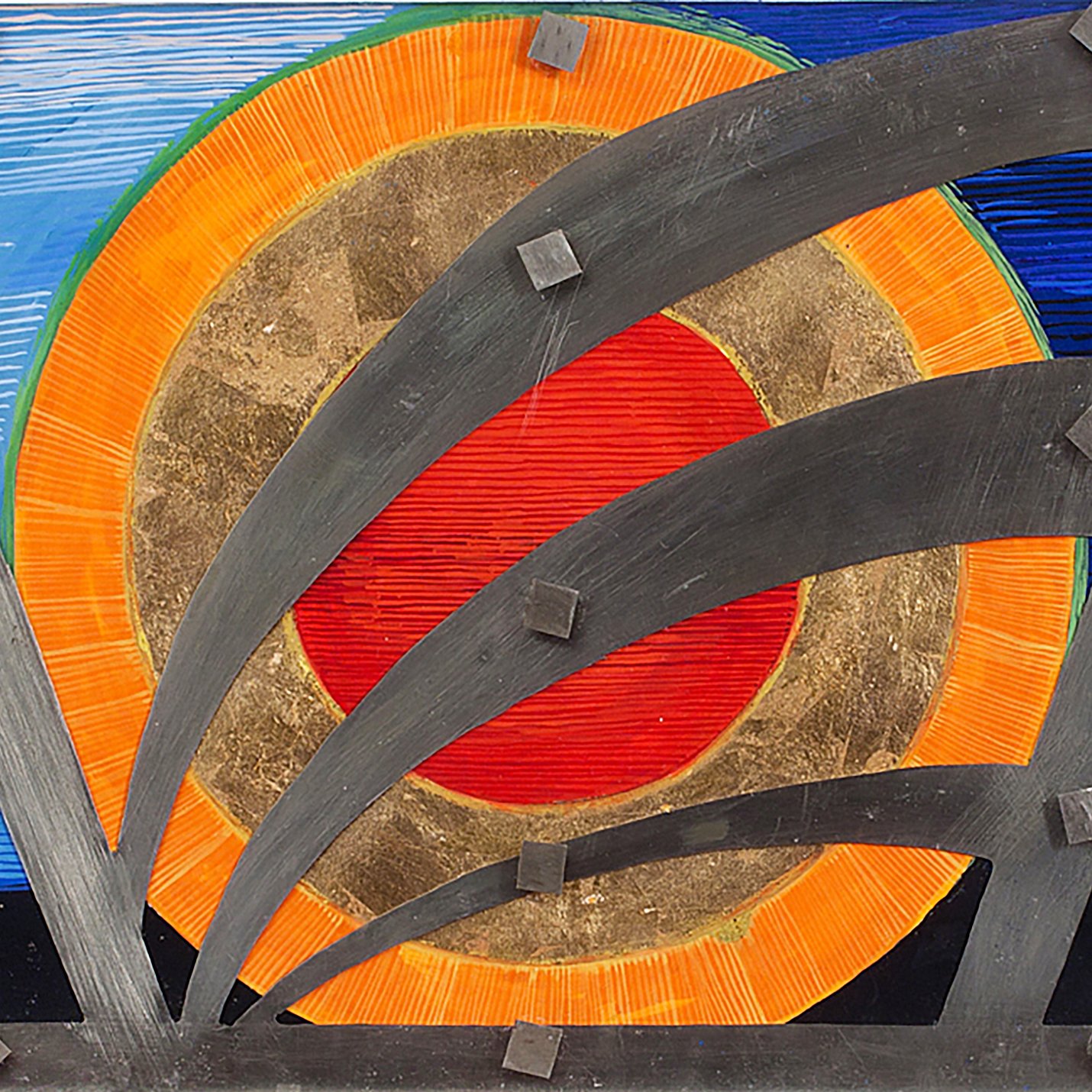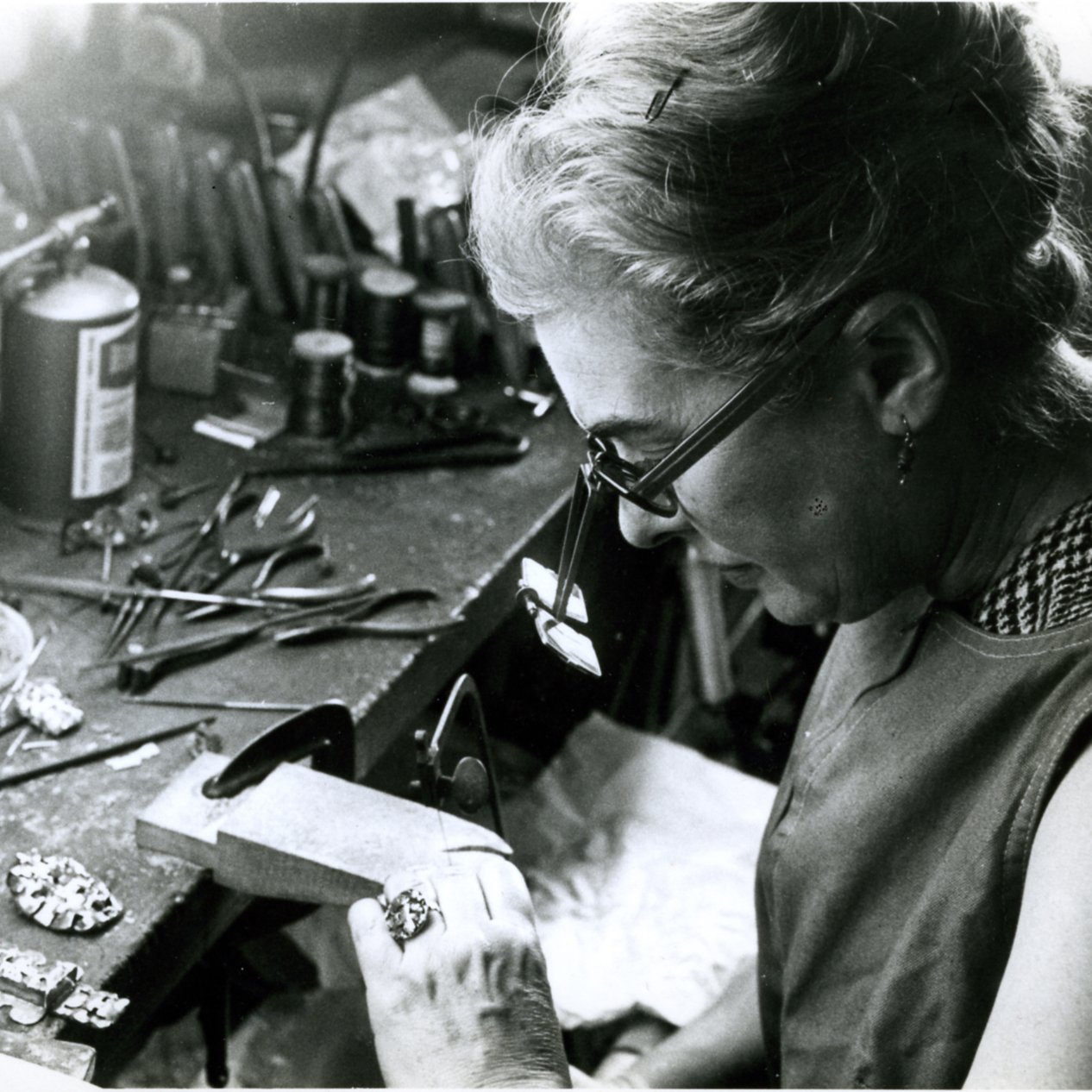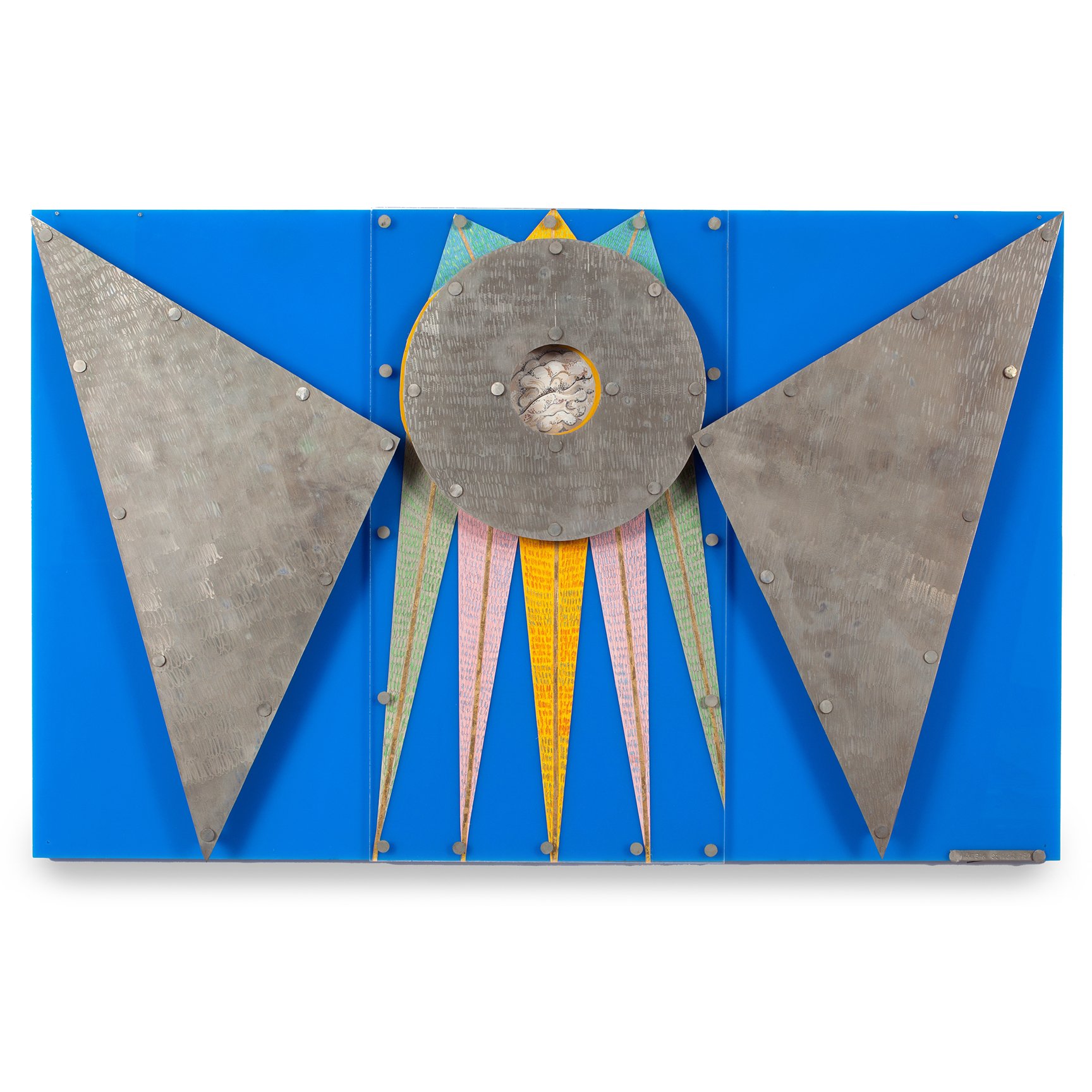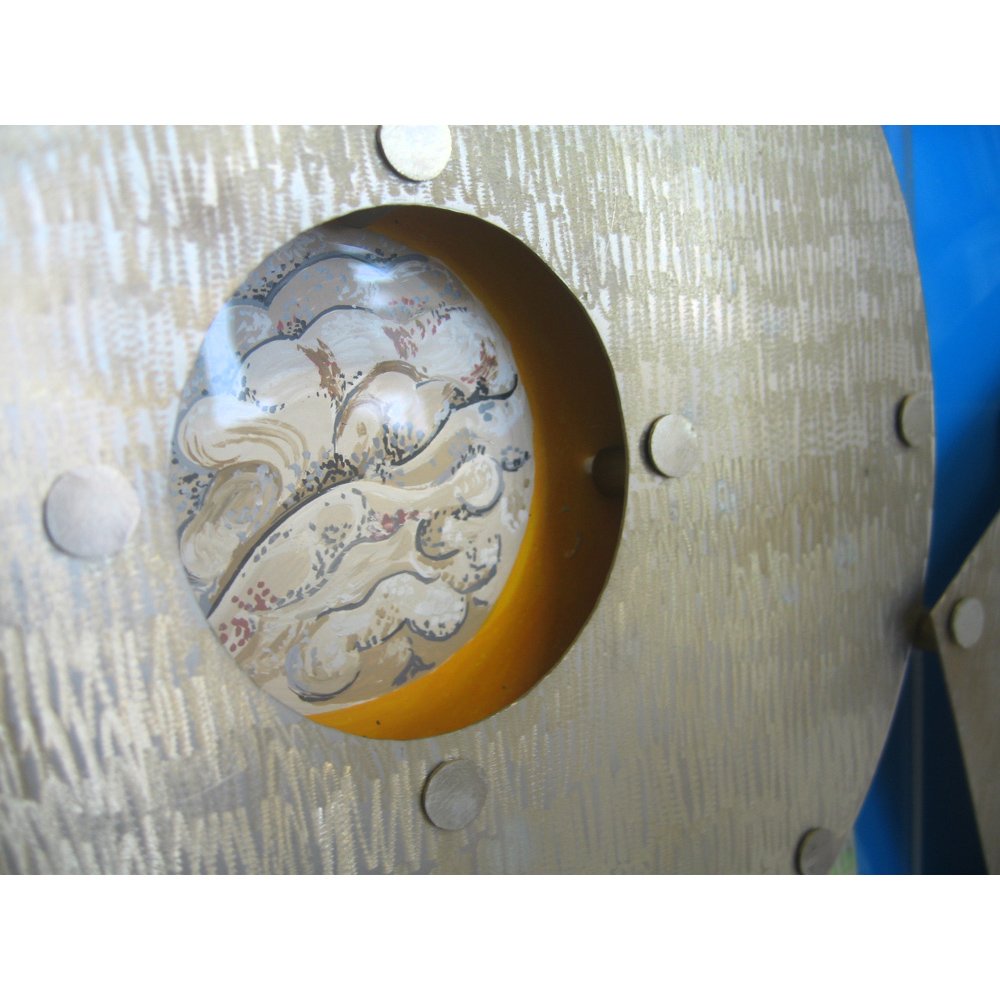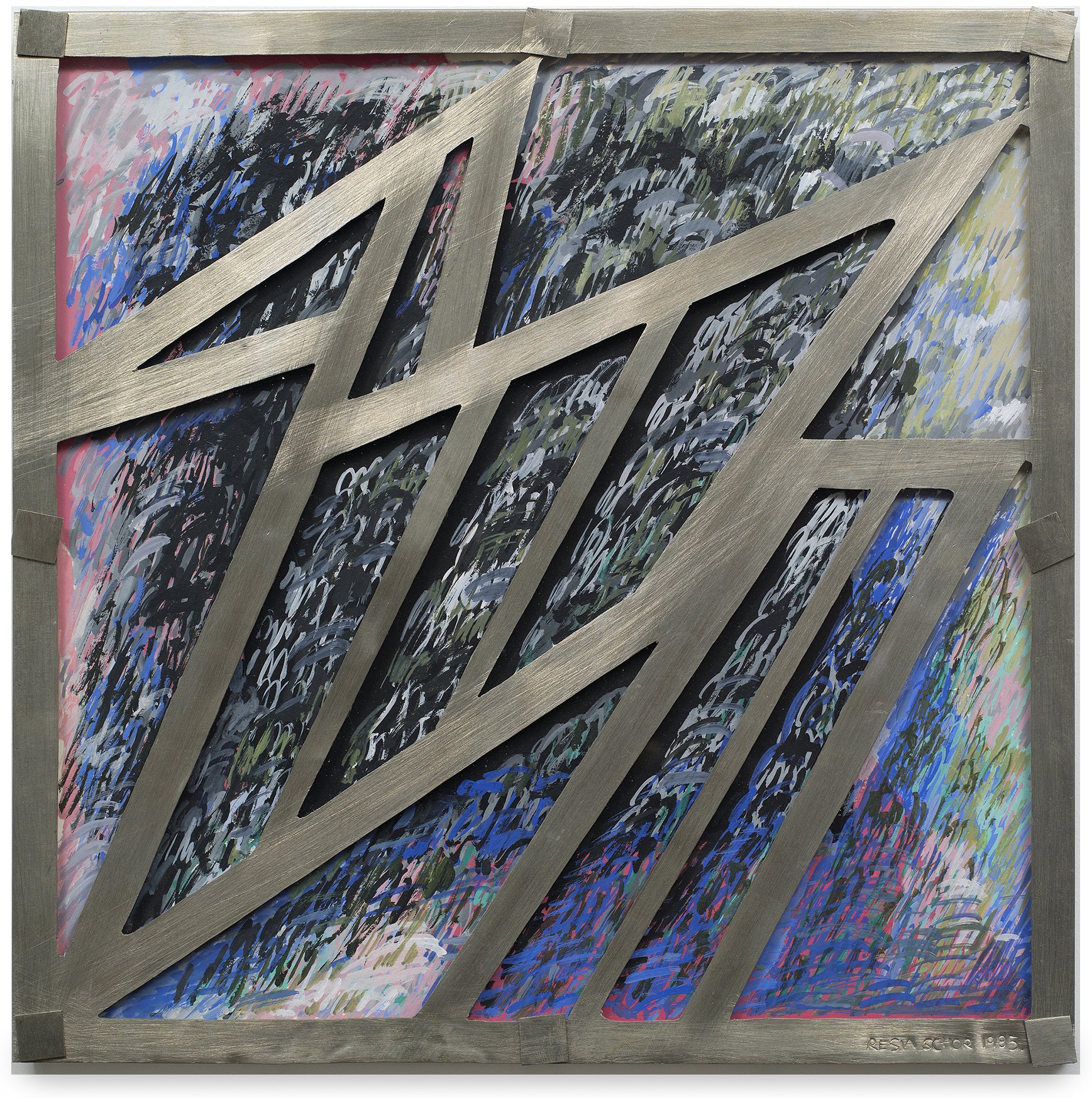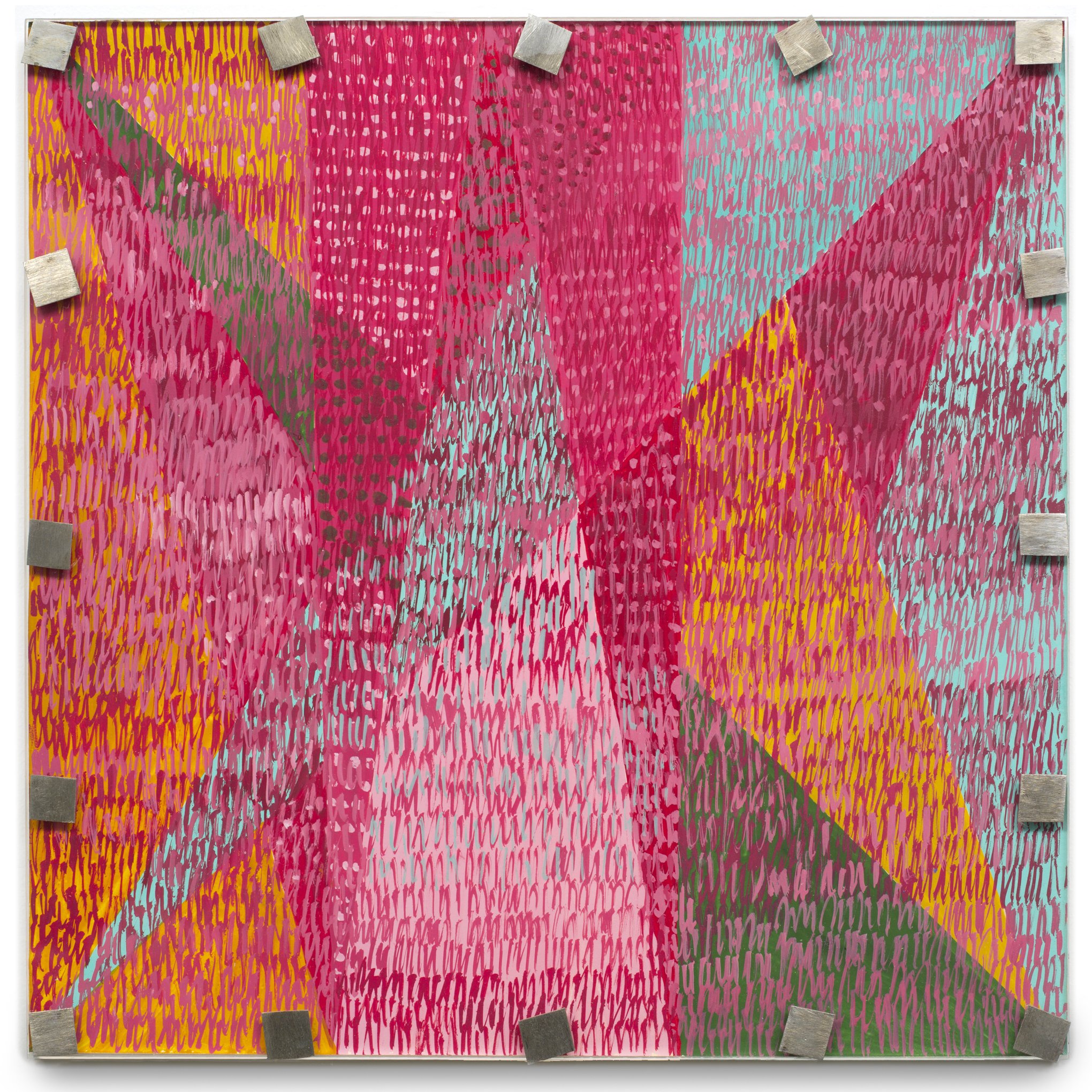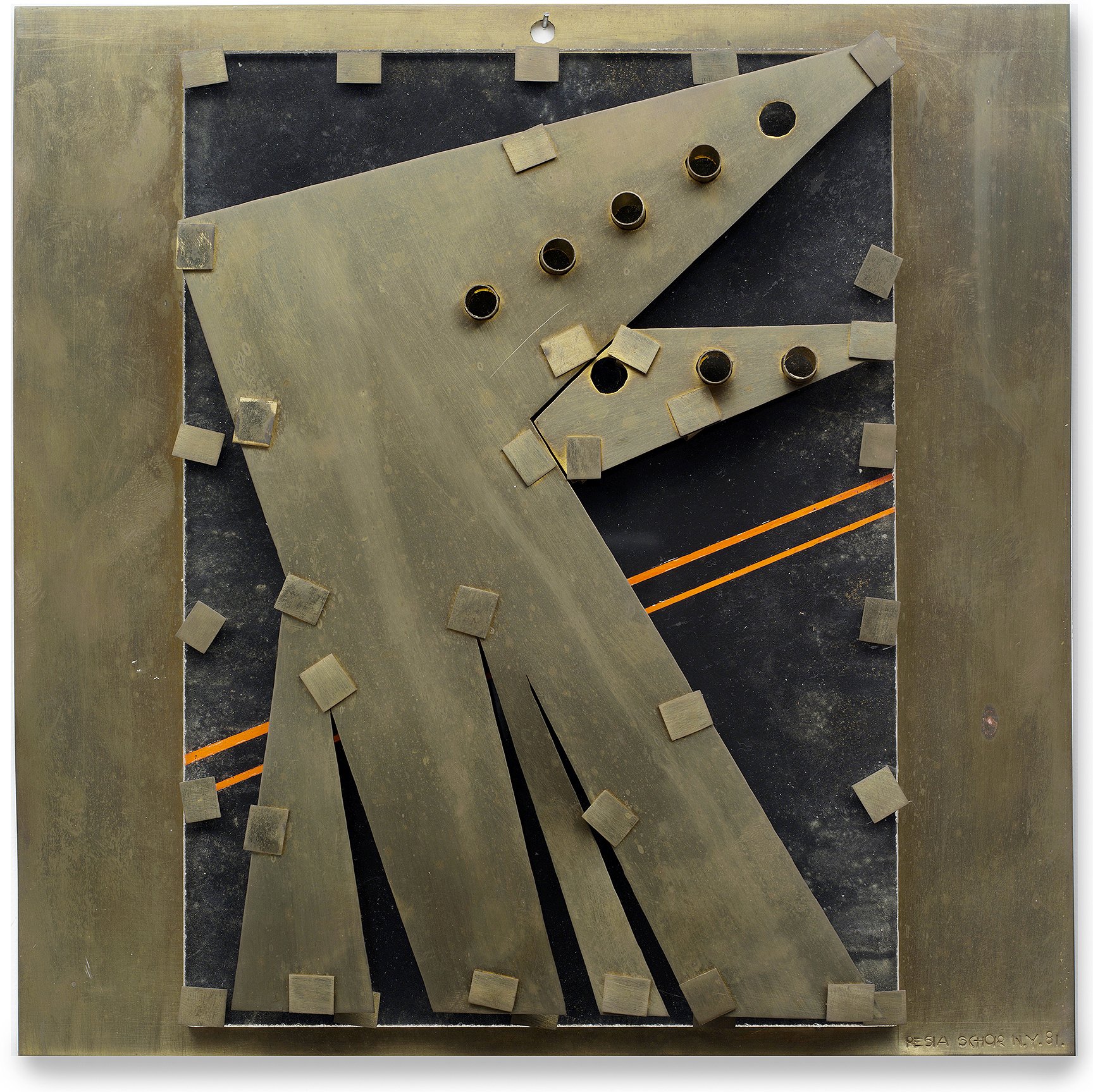Satchel Projects is pleased to present War and Peace, an exhibition of mixed-media wall reliefs by Resia Schor (1910—2006), on view from April 11 through May 11, 2024. There will be an opening reception from 6—8PM on Thursday, April 11. An exhibition catalogue featuring an essay by Barry Schwabsky is forthcoming.
This is the first time this body of work has been exhibited in New York. The show has been timed to coincide with her daughter Mira Schor’s solo exhibition WET, on view at Lyles & King Gallery through May 4.
Born in Poland, Resia Schor (née Ajnsztajnowna / Ainstein) began her artistic life as a painter, studying at the Warsaw Academy of Fine Arts (at a time when the Academy maintained a “numerus clausus” for Jewish students), later moving to Paris with her husband Ilya, where she studied art history at the Ecole du Louvre. The Schors fled Paris ahead of Nazi occupation, eventually settling in New York City. As Ilya established himself as a multi-disciplined artist — a noted painter, jeweler, illustrator, and creator of Judaica — Resia pursued a career as a painter, working predominantly in gouache, creating abstract compositions that were in conversation with European and American artists such as Cézanne, Philip Guston and Jack Tworkov. Her paintings were exhibited under the name Resia Ain in Midtown at the Workshop Gallery, garnering positive reviews.
Resia Schor’s life changed dramatically with Ilya’s death in 1961. Finding herself a single parent and needing a source of income to support herself and her two children, she sat down at her late husband’s worktable. Picking up his tools, she endeavored to complete a few small works he had left unfinished with the intention of selling them as collaborative pieces. From this early, self-taught beginning, she embarked on a decades-long engagement with metal and three-dimensional form. Both challenged and exhilarated by the resistance and possibilities of metal, Schor persisted, and began to make a name for herself creating unique, hand-built sculptural jewelry. Each work was conceived and constructed from individual pieces of silver and gold, sometimes incorporating semi-precious stone, the elements composed together into small distinctive sculptures that resisted the categories of craft and commercial ornament.
In the late 1960s, missing her earlier engagement with painting (and especially color), Schor set about creating a new form for herself, employing diverse materials — brass and white metal, brightly-hued Plexiglas, painted paper, and gold leaf — layered and joined together via an inventive, hand-cut “rivet” system. These hybrid painting / sculptural relief pieces were resolutely Modernist, yet they reflected a remarkably distinctive and unconventional approach to material and form. While the materials were diverse, Schor found ways to unify each piece into a cohesive whole – for example, burnishing loops and lines into expanses of metal, echoing the pattern of painted hatch-marks in the gouache elements.
Over the next three decades, as the works grew in size and ambition, the scope of Schor’s subject matter also became more expansive and expressive, its content deeper. One facet of her work reflected her connection to the natural world. Works like Storm on the Cape and Red Sun directly responded to the atmosphere and environment she encountered on Cape Cod, where she summered — the landscape, the light, the ocean, and the sun.
While Schor was responsive to the natural environment, she was also politically engaged, an interest that found expression in works that addressed politics and world events. This aspect of her work can be seen in Lockerbie, a jagged, fragmented piece she created in response to the 1988 terrorist attack, and B-2 Stealth, a work that uses geometry and symmetry to represent the deadly silhouette of the (then) state-of-the-art military aircraft. It’s notable here that Schor had often visited Picasso’s Guernica, a piece created in response to the bombing of civilians in the Spanish town Guernica by the Nazi allies of the fascist Franco (the painting was on view at the Museum of Modern Art until 1981, when it was returned to Spain).
In the pieces she undertook toward the end of her life, Schor’s subject matter seemed to address creation itself, along with loss and grief. She had lost all of her loved ones except her daughter Mira, with whom she had shared the life of a working artist for many years. A later piece, titled The Black Sun of Melancholy, exerts a dark beauty. Speaking about this period in her mother’s creative life, Mira said, “For the most part these later works especially the larger works were not exhibited. Having succeeded in making a living from her work, a genuine accomplishment, and a true American success story, she put her energy into doing the work she wanted to do rather into career ambitions, as she approached her ninetieth year.“
Resia Schor’s art and life embodied a “lived feminism.” Encountering hardship, she responded with creativity and determination, and eventually persevered. Perhaps the most emblematic image in her later oeuvre was her Nike figure, based on the iconic statue The Winged Victory of Samothrace, which she had passed many times on her way to and from classes at the Louvre. A feminine symbol of military triumph, the Victory stands on a pedestal shaped like a ship’s bow, the wind blowing against her robes, striding forward, her wings outstretched.
In the last year of her life, Resia and Mira went together to see the Whitney Museum exhibition “Picasso and American Art,” which featured a selection of the Spaniard’s work alongside that of a dozen or so American artists. It was wintertime, and too cold to walk, so they decided to take a taxi home. Mira remembers her mother, then 95, sitting in the back seat, bundled up against the chill. She looked up at her daughter and said, “it’s the kind of show that makes you want to go back to the studio and work.”
Resia Schor (1910–2006) was an American artist who lived and worked in New York City and Provincetown, Massachusetts. Solo and 2-person shows include: the Provincetown Art Association and Museum, Provincetown, MA; Yeshiva University Museum, New York, NY; East End Gallery, Provincetown, MA; Arras Gallery, New York, NY; The Benson Gallery, Bridgehampton, NY; The Workshop Gallery, New York, NY. Group exhibitions include: the Provincetown Art Association and Museum, Provincetown, MA; Educational Alliance, New York, NY; the Aldrich Museum of Contemporary Art, Ridgefield, CT; East End Gallery, Provincetown, MA; Turman Gallery, Indiana State University, Terre Haute, IN; Junior Art Gallery, Louisville, KY; Lawrence University, Appleton, WI; The University Art Museum at the University of Texas, Austin TX; Gallery of the Maryland Institute, Baltimore, MD. Schor’s work has been featured in The New York Times, Crafts Horizon, Newsday, NY Arts, Provincetown Banner, Provincetown Arts, and Crafts Horizon, and 05401 Magazine.
For press inquiries, please contact Andrea Champlin at info@satchelprojects.com or call 917-488-5921.

